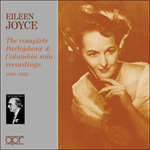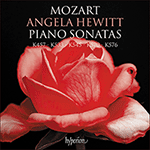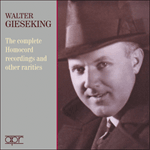
Welcome to Hyperion Records, a British classical label devoted to presenting high-quality recordings of music of all styles and from all periods from the twelfth century to the twenty-first.
Hyperion offers both CDs, and downloads in a number of formats. The site is also available in several languages.
Please use the dropdown buttons to set your preferred options, or use the checkbox to accept the defaults.





 PERFORMANCE
PERFORMANCE RECORDING
RECORDINGLike the near-contemporary String Quintet in D major, K593, K576 is an effortless amalgam of the ‘learned’ and ‘popular’, marrying an apparently light, convivial tone with dazzling contrapuntal craft. The opening theme, in rollicking ‘hunting’ style, lends itself naturally to canonic elaboration, a hint Mozart takes up almost at once and pursues further when the same theme initiates the second subject group. There is a suavely lyrical contrasting theme, marked dolce; and the exposition concludes with a little cadential figure derived from the opening bars. The development works the main theme in wiry canonic textures and then glides back to the recapitulation in a breathtaking chromatic passage based on the exposition’s final cadence.
The Adagio contrasts an expressive, richly ornamented melody in A major with a forlorn, though equally florid, central episode in F sharp minor. One inspired touch is the way the coda alludes to the episode’s rhythm and texture, but not its precise melodic outline. Like the first movement, the rondo finale develops its breezy, popular-style tunes in athletic polyphonic textures, now with an added virtuosity. Belying Mozart’s original intention to write an ‘easy’ sonata for Princess Friederike, this is perhaps the most technically difficult keyboard movement he ever wrote. Did the princess ever play it, one wonders?
from notes by Richard Wigmore © 2015
Comme le quasi contemporain Quintette à cordes en ré majeur, K593, K576 marie avec bonheur le «savant» et le «populaire», un ton en apparence léger, convivial, et une éblouissante maîtrise contrapuntique. Le thème d’ouverture, dans un noceur style de chasse, se prête naturellement au développement canonique, ce que Mozart saisit presque immédiatement et poursuit quand ledit thème lance le groupe du second sujet. Un thème contrasté, doucereusement lyrique, est marqué dolce; et l’exposition termine par une petite figure cadentielle dérivée des mesures inaugurales. Le développement travaille le thème principal dans de nerveuses textures canoniques avant de reglisser vers la réexposition en un époustouflant passage chromatique fondé sur la cadence finale de l’exposition.
L’Adagio oppose une mélodie en la majeur expressive, richement ornée, à un épisode central en fa dièse mineur désolé, mais non moins fleuri. Touche inspirée, la coda fait allusion au rythme et à la texture de l’épisode, mais pas à son contour mélodique précis. Comme le premier mouvement, le rondo-finale développe ses mélodies joviales, de style populaire, en de vigoureuses textures polyphoniques, mais avec un surcroît de virtuosité. Trahissant son intention première d’écrire une sonate «facile» pour la princesse Friederike, Mozart signa peut-être là son mouvement pour clavier le plus difficile techniquement. La princesse l’a-t-elle jamais joué?
extrait des notes rédigées par Richard Wigmore © 2015
Français: Hypérion
Wie im fast gleichzeitig entstandenen Streichquintett in D-Dur, KV 593, verbinden sich in KV 576 der gelehrte Stil und das von Mozart so genannte „Popolare“ mühelos miteinander: ein offensichtlich leichter, geselliger Ton mit glänzender gekonnter Kontrapunktik. Das Anfangsthema eignet sich mit seinem ausgelassenen Jagdanklängen ganz natürlich zur Ausarbeitung als Kanon, was Mozart auch fast sofort aufgreift und weiter verfolgt, wenn die zweite Themengruppe mit demselben Thema beginnt. Es gibt ein kontrastierendes, sanftes und lyrisches, als dolce bezeichnetes Thema; und die Exposition endet mit einer kleinen Kadenzfigur, die von den Anfangstakten abgeleitet ist. Die Durchführung verarbeitet das Hauptthema in einer verwickelten Kanonstruktur und geht dann in einer atemberaubenden chromatischen Passage zur Reprise über, die auf der letzten Kadenz der Exposition basiert.
Im Adagio steht eine ausdrucksvolle, reich verzierte Melodie in A-Dur einer verzweiflungsvollen, wenn auch gleichfalls blumigen, zentralen Episode in fis-Moll gegenüber. Geistreich wird in der Coda auf Rhythmus und Textur der Episode angespielt, jedoch nicht auf ihre genaue melodische Kontur. Wie im ersten Satz werden im Finalrondo luftig-leichte Melodien in kraftvollen polyphonen Texturen entwickelt, nun auch voller Virtuosität. Dieser Satz, der Mozarts ursprüngliche Absicht, eine „leichte“ Sonate für Prinzessin Friederike zu schreiben, Lügen straft, ist wohl der technisch schwierigste Klaviersatz, den er je geschrieben hat. Man fragt sich, ob die Prinzessin ihn jemals gespielt hat.
aus dem Begleittext von Richard Wigmore © 2015
Deutsch: Christiane Frobenius
 Eileen Joyce - The complete Parlophone & Columbia solo recordings Eileen Joyce - The complete Parlophone & Columbia solo recordings‘Listening to Joyce is strangely addictive. One cannot wait, as it were, to read the next chapter. She shares with Kreisler and Tauber the same unteac ... ‘The quality that comes across in these performances is the sheer joy of playing. Joyce possessed a formidable technique and an interpretative mind th ...» More |
 Mozart: Piano Sonatas K457, 533, 545, 570 & 576 Mozart: Piano Sonatas K457, 533, 545, 570 & 576With this, the third and final volume of Mozart’s complete piano sonatas, Angela Hewitt completes yet another of her memorable Hyperion series. Of earlier instalments, Gramophone admired the ‘spotless surfaces and impeccable proportions’ of ...» More |
 Walter Gieseking - The complete Homocord recordings and other rarities Walter Gieseking - The complete Homocord recordings and other raritiesWalter Gieseking is known as one of the greatest 20th-century pianists, and his playing of Debussy and Ravel in particular is often regarded as definitive. For most of his recording career he recorded for Columbia, but his earliest recordings were ...» More |
 Wanda Landowska - The complete piano recordings Wanda Landowska - The complete piano recordingsWanda Landowska (1879–1959) has achieved such fame for her 20th-century revival of the harpsichord that it is sometimes forgotten that she was a very fine pianist and continued to play music of the classical period on modern piano. This set brings ...» More |

